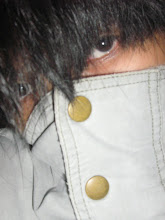Monday, October 27, 2008
The City of Tayabas
Wednesday, October 1, 2008
My 3D Modeled Designs
Friday, September 26, 2008
Project Management

PERT charts are usually drawn on ruled paper with the horizontal axis indicating time period divisions in days, weeks, months, and so on. Although it is possible to draw a PERT chart for an entire project, the usual practice is to break the plans into smaller, more meaningful parts. This is very helpful if the chart has to be redrawn for any reason, such as skipped or incorrectly estimated tasks.
Complex projects require a series of activities, some of which must be performed sequentially and others that can be performed in parallel with other activities. This collection of series and parallel tasks can be modeled as a network.
In 1957 the Critical Path Method (CPM) was developed as a network model for project management. CPM is a deterministic method that uses a fixed time estimate for each activity. While CPM is easy to understand and use, it does not consider the time variations that can have a great impact on the completion time of a complex project.
The Program Evaluation and Review Technique (PERT) is a network model that allows for randomness in activity completion times. PERT was developed in the late 1950's for the U.S. Navy's Polaris project having thousands of contractors. It has the potential to reduce both the time and cost required to complete a project.
CRITICAL PATH METHOD
Critical Path Method (CPM), is a procedure for using network analysis to identify those tasks which are on the critical path: ie where any delay in the completion of these tasks will lengthen the project timescale, unless action is taken.
The Critical Path Method, as they are known, are those activities which basically determine the total project length (runtime, above) as well as make up the longest overall duration. If those activities are not completed on time, there is a major/real chance that the project will not meet its deadline(s).
Tasks which fall on the critical path should receive special attention by both the project manager and the personnel assigned to them. The critical path for any given method may shift as the project progresses; this can happen when tasks are completed either behind or ahead of schedule, causing other tasks which may still be onschedule to fall on the new critical path.
S-Curve

The S Curve is a well known project management tool and it consists in "a display of cumulative costs, labour hours or other quantities plotted against time".The name derives from the S-like shape of the curve, flatter at the beginning and end and steeper in the middle, because this is the way most of the projects look like.
The S curve can be considered as an indicator and it's used for many applications related to project management such as: target, baseline, cost, time etc. That's why there is a variety of S Curves such as:
-Cost versus Time S Curve;(appropriate for projects that contain labour and non-labour tasks).
-Target S Curve;(This S Curve reflects the ideal progress of the project if all tasks are completed as currently scheduled)
-Value and Percentage S Curves;(Percentage S Curves are useful for calculating the project's actual percentage complete)
-Actual S Curve;(This S Curve reflects the actual progress of the project to date)
In order to be able to generate a S Curve, A Baseline and Production Schedule are necessary because they contain important information for each task: -the Baseline - contains information about Actual Start date and finish date.
-The Baseline - can also contain information about Man Hours and costs.
-The Production Schedule contains information about the actual percentage complete.
Saturday, September 20, 2008
3D Max Quick Glow Tutorial
Goto Material Editor and create new standard material with some color of your
choice. Now, this next step is important. Click on Material Effect Channel button
(Default marked as number 0) and select any number but 0 (Zero). This is why
every new material has default Channel Id set to 0, and we are making only this
material glow. So, select number, lets say, 5 (five). And this is it, for setting
the scene up.
Now, from Rendering menu select Video Post. A new window appears. This is Video
Post. It has some great neat stuff you can use, but now, we will only be using
these three buttons.
Using button
menu you must select the view you want to render. Lets say Perspective, or Camera.
You can click OK after choosing the viewport. You can also change every option
concerning the render, like renderer, blur, etc.
Using button
Filter Event. Here you can choose from various image effects, but we need Lens
Effects Glow. So select one from the drop down menu and click on SETUP...
Now, another window pops up and it is a Setup for Glow effect. Now, remember
when you assigned to your material Material Effect Channel to 5? Well, now you
have to Check Effects ID, and beside it instead of number 1 type in number 5.
So the glow effect only affect materials with this Effect ID.
Now click on Preferences tab in the sam window. Here, you can adjust Effect
size, and effect color. I hope this part doesn't need to be explained.
Now you have the scene setup in your Video Post window like on this image,
and now you will open the render window using button
In this Execute Video Post window you set up basic things about rendering.
Output time and Output size. You can set that what ever you want to.
Finished Render
Tuesday, September 16, 2008
Saturday, September 13, 2008
3D Max Glass Tutorial
Image is rendered with Brazil r/s with the following settings: For the glass material I used Brazil glass, and for the environment I used kitchen.hdr. |




